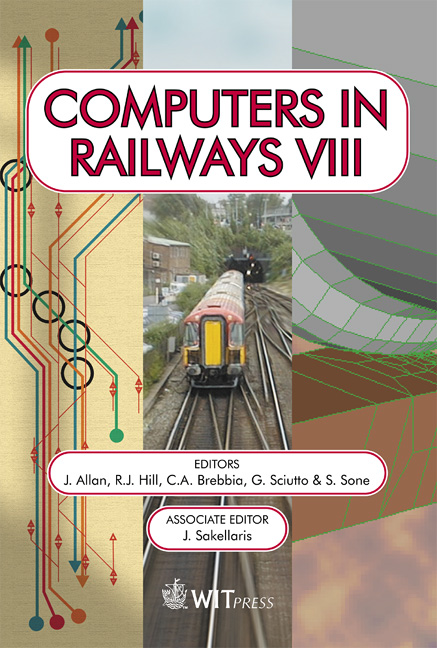Cost-effective Timetable & Infrastructure Simulation
Price
Free (open access)
Transaction
Volume
61
Pages
7
Published
2002
Size
385 kb
Paper DOI
10.2495/CR020381
Copyright
WIT Press
Author(s)
N G Harris & M Cordon
Abstract
With increasing traffic levels on many of the world’s railways, the need to understand the impact of one train service upon another has never been more important. Similarly, the impact of different infrastructure options is also crucial, especially where contractual payments between infrastructure providers and train operators are partly dependent upon performance measured in terms of delays. There are a number of computer packages already on the market for examining these issues in the context of major investment decisions such as a new line. However, with on-rail congestion spreading to secondary routes, and occurring at more times of day, the need for simulation is increasing. For smaller investment decisions, though, the correct identification of robust train paths, whilst important, does not necessarily sustain major investment in the planning process. Moreover, quick responses are required for many smaller problems, such as the response of an infrastructure authority to an operator’s request for paths. The software developed here seeks to address these problems through an ingenious design which enables the program to achieve full interlocking between points, signals and trains. This means that simulations can be created and modified quickly, so that more scenarios can be explored in a given time. Moreover, the actual positions of trains are shown, rather than merely the blocks which they occupy, thereby increasing the understanding of results. These two features mean that less time can be spent in constructing simulations, and more time in testing options and taking action on the basis of the results, which should mean an improvement in the railway timetabling process.
Keywords





